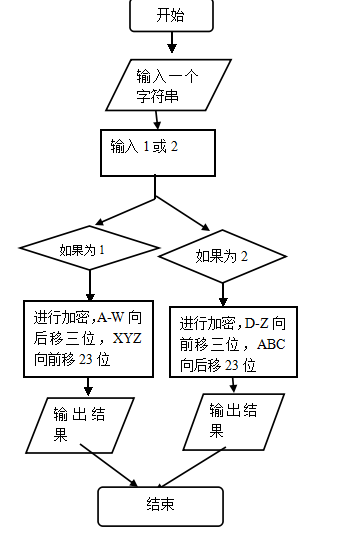1.请查看String.equals()方法的实现代码,注意学习其实现方法。equals所在位置:
在Object类当中,而Object是所有类的父类,包含在jdk里面,但并不适合绝大多数场景,通常需要重写
public boolean equals(Object obj) { return (this == obj); }
equals的作用:
用于判断两个变量是否是对同一个对象的引用,即堆中的内容是否相同,返回值为布尔类型
equals的基本使用:
boolean b = obj1.equals(obj2);
String类型比较不同对象内容是否相同,应该用equals,因为==用于比较引用类型和比较基本数据类型时具有不同的功能。
2.整理String类的Length()、charAt()、 getChars()、replace()、 toUpperCase()、 toLowerCase()、trim()、toCharArray()使用说明、阅读笔记发表到博客园。
Length():
返回此字符串的长度。长度是等于Unicode代码单元中的字符串的数目
public int length() {
return value.length;
}
charAt():
charAt(intindex)方法是一个能够用来检索特定索引下的字符的String实例的方法.charAt()方法返回指定索引位置的char值。索引范围为0~length()-1.如:str.charAt(0)检索str中的第一个字符,str.charAt(str.length()-1)检索最后一个字符.
public char charAt(int index) {
if ((index < 0) || (index >= value.length)) {
throw new StringIndexOutOfBoundsException(index);
}
return value[index];
}
getChars()
getChars(int srcBegin,int srcEnd,char[] dst,int dstBegin)将字符从此字符串复制到目标字符数组。
要复制的第一个字符在索引 srcBegin 处;要复制的最后一个字符在索引 srcEnd-1 处(因此要复制的字符总数是 srcEnd-srcBegin)。要复制到 dst 子数组的字符从索引 dstBegin 处开始,并结束于索引.例如
String str = "abcdefghikl";
Char[] ch = new char[8];
str.getChars(2,5,ch,0);
就是从str的第二个字母开始一直复制到第五个,一共是3个字符,从ch的第一个开始接受
public void getChars(int srcBegin, int srcEnd, char dst[], int dstBegin) {
if (srcBegin < 0) {
throw new StringIndexOutOfBoundsException(srcBegin);
}
if (srcEnd > value.length) {
throw new StringIndexOutOfBoundsException(srcEnd);
}
if (srcBegin > srcEnd) {
throw new StringIndexOutOfBoundsException(srcEnd - srcBegin);
}
System.arraycopy(value, srcBegin, dst, dstBegin, srcEnd - srcBegin);
}
replace()
public String replace(char oldChar, char newChar)返回一个新的字符串,它是通过用 newChar 替换此字符串中出现的所有 oldChar 得到的。 如果 oldChar 在此 String 对象表示的字符序列中没有出现,则返回对此 String 对象的引用。否则,创建一个新的 String 对象,它所表示的字符序列除了所有的 oldChar 都被替换为 newChar 之外,与此 String 对象表示的字符序列相同。 示例: "mesquite in your cellar".replace('e', 'o') returns "mosquito in your collar" "the war of baronets".replace('r', 'y') returns "the way of bayonets" "sparring with a purple porpoise".replace('p', 't') returns "starring with a turtle tortoise" "JonL".replace('q', 'x') returns "JonL" (no change) 参数: oldChar - 原字符。 newChar - 新字符。 返回: 一个从此字符串派生的字符串,它将此字符串中的所有 oldChar 替代为 newChar。
public String replace(char oldChar, char newChar) {
if (oldChar != newChar) {
int len = value.length;
int i = -1;
char[] val = value; /* avoid getfield opcode */
while (++i < len) {
if (val[i] == oldChar) {
break;
}
}
if (i < len) {
char buf[] = new char[len];
for (int j = 0; j < i; j++) {
buf[j] = val[j];
}
while (i < len) {
char c = val[i];
buf[i] = (c == oldChar) ? newChar : c;
i++;
}
return new String(buf, true);
}
}
return this;
}
toUpperCase()
将在此字符串中的所有字符为大写
public String toUpperCase() {
return toUpperCase(Locale.getDefault());
}
toLowerCase()
将在此字符串中的所有字符为小写
public String toLowerCase() {
return toLowerCase(Locale.getDefault());
}
trim()
trim()方法返回调用字符串对象的一个副本,但是所有起始和结尾的空格都被删除
public String trim() {
int len = value.length;
int st = 0;
char[] val = value; /* avoid getfield opcode */
while ((st < len) && (val[st] <= ' ')) {
st++;
}
while ((st < len) && (val[len - 1] <= ' ')) {
len--;
}
return ((st > 0) || (len < value.length)) ? substring(st, len) : this;
}
toCharArray()
意思是把别的数据转换成字符数组
public char[] toCharArray() {
// Cannot use Arrays.copyOf because of class initialization order issues
char result[] = new char[value.length];
System.arraycopy(value, 0, result, 0, value.length);
return result;
}
3.古罗马皇帝凯撒在打仗时曾经使用过以下方法加密军事情报:

请编写一个程序,使用上述算法加密或解密用户输入的英文字串要求设计思想、程序流程图、源代码、结果截图
设计思想:输入一个字符串,然后选择加密或解密,加密。加密就是将字符后移3位,解密就是将字符串向前移3位,然后输出。
程序流程图:

源代码:
import java.util.*;
public class Jiami {
public static void main(String[] args) {
Scanner sc=new Scanner(System.in);//可以读出输入数
System.out.println("输入1或2(1加密,2解密):");
int a=sc.nextInt();
if(a==1)
{
System.out.println("请输入要加密的字符串:");
String b=sc.next();
String g=new String();
for(int i=0;i<b.length();i++)
{
char c=b.charAt(i);//将b的字符分离出来给c
if(c>='A'&&c<='W')
{
c+=3;
}
else
{
c-=23;
}
g=g+c;
}
System.out.println("加密的字符串为:"+g);
}
if(a==2)
{
System.out.println("请输入要解密的字符串:");
String d=sc.next();
String h=new String();
for(int i=0;i<d.length();i++)
{
char e=d.charAt(i);//将d的字符分离出来给e
if(e>='D'&&e<='W')
{
e-=3;
}
else
{
e+=23;
}
h=h+e;
}
System.out.println("解密的字符串为:"+h);
}
}
}
结果截图

